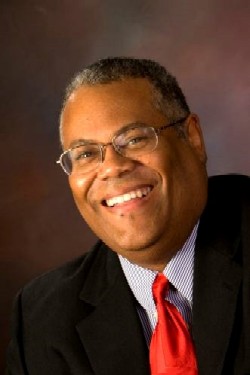Succession Planning for Leadership Diversity – Part Two
Posted by Mitch Mitchell on Dec 2, 2016
In part one of my succession planning for leadership diversity series, I gave a preamble as to why such a thing should be a necessary process in all companies. The next stage is to talk about the process of creating a workable plan towards that goal.
1. Setting the Goals
 |
No plan works without first deciding what the ultimate goals are. In my opinion, the first goal should be in training leaders who understand your industry, your company and the types of employees you're looking to hire and work with. After that, if there's anything else you're looking for to lead your company to greater heights, you can tailor your goals for that.
2. Hiring The Right Employees
This is the most critical part of the entire process for more than one reason. The first is that it costs a lot to hire someone and keep them at least through the probationary period. The second is that many companies hire people based on the wrong criteria. The third is that sometimes people are hired who aren't a proper fit for the environment they're going to be put into. Let's take a look at some of these areas.
a) Criteria for Hiring
I'm going to base this part of the article on the criteria I set up in my Mitchell Employee Evaluation Module. I list the 3 areas of evaluation criteria as follows:
* Technical Skills
* Social Skills
* Unskilled Criteria
Unlike most company processes, this equates to 47 specific criteria that companies can decide upon to help them throughout the hiring and interview process. Whether you check out the module or set something up for yourself, my recommendation is to come up with anywhere from 5 to 10 criteria you want in any candidates you're looking to hire.
Now let's dig a bit deeper:
1) Based on Education
I hate this specific criteria, although I understand its use in eliminating a number of candidates you might feel aren't qualified to do the work. However, I've found that a lot of people who scored the highest grades in college aren't always the best people in relating to others.
2) Based on Past Experiences
This one is hard if you're hiring people right out of college because what kind of real experience could most of them have to show you their leadership skills unless they were in athletics? If you're hiring someone with at least 5 years of work experience this might work better for you, but it's going to be difficult getting information out of previous employers to ascertain this one.
3) Why a feeling may or may not be sufficient
Although it only happened once, one of the best feelings I ever had about someone turned out to be the worst hire I ever made. The thing is, I had a couple other directors in on the interview with me and she fooled all of us.
That one mistake notwithstanding, everyone else I've ever hired has worked out wonderfully. Of course, having criteria to fall back on helped a lot, although I didn't have that specific criteria early in my career. That's why I recommend writing down and following what you believe you need for both regular employees and long term prospects for leadership; sometimes you can't trust your own judgment.
b) Placing employees in a fair environment
 |
The story I like to use for this one is remembering a large downstate New York company that always sent its recruiters to California to hire people who were at the top of their class in mathematics and engineering. Oddly enough, most of those people happened to be Asian... and I mean Asian, not Asian-American.
The company would hire these people based on their college grades and then ship them all the way across the country to work and live in a community that didn't have a significant Asian population. This was the culture the people they brought over were used to. Not only that, but every year almost all the new employees they hired left to go back home, so there weren't even a significant number of other Asians working in that company's location.
In an environment like this, neither the employees or the company could succeed, and it took 5 years of doing this before management realized they needed to change their criteria because of the cost of hiring so many people who weren't prepared for such a change in their lives.
3. Training and Evaluation
I've always been big on two things: written training and procedure processes and consistent and fair evaluations. I don't see either of these all that often, and that means employees are either set up to fail or evaluated on what they've done lately instead of a body of work.
You can't have good employees without good training; without good employees, there's no chance to have a pool of people to consider for any succession plans. This means:
a) Evaluating training methods
Not only do you have to have training methods that are solid, but you need to test them to make sure they're always proper, because things change.
b) Follow up on training
Even if you know your training processes should work just fine, you need to remember two things as it relates to the employees:
1) Evaluation of performance - you need to evaluate employees more than once a year; otherwise, you have no idea if they're competent or not;
2) Continuous training - training never stops because processes are always changing. Even if you have to send people outside of the organization for more education, it benefits the company.
c) When trying to be fair breeds inequality
 |
I'm someone who always says that trying to make all criteria equal isn't fair to those whose background might mean they learn and process information differently that everyone else. What I say less rarely yet is equally important is that even if this is something you should consider, it should be a consideration in the context that your efforts to be fair don't create a visible bias in the wrong direction. No matter what you do, there's always someone watching to make sure they're being treated fairly, even if what you're doing is none of their concern.
4. The Support System
Whether it's general employees or candidates for management, there always needs to be a support system for them to thrive. These are the areas where upper management needs to take charge and help HR or whomever make the proper moves for the ultimate success of an organization:
a) Other Employees
There's a place for camaraderie as far as departments and teams go but once someone has been deemed to be leadership material it's going to take someone at a higher level to guide them the proper way.
b) The Manager
This is the obvious initial candidate for the job, unless the manager you have in place doesn't exhibit the skills needed to groom someone properly to become a leader (remember that 85% I mentioned above?). This is a problem for companies to begin with but it might be difficult to make the proper changes at this level if there are a lot of mid-level managers and not enough really good candidates to fill the positions (another good reason for succession planning).
c) Mentors
Mentors are always a key and it doesn't have to be overly obvious that they're around until necessary. For instance, even though I mentioned my overall mentor above, I actually had two other people who were crucial to my gaining knowledge and a little bit of influence when I was working my first job.
One was the vice president of the department I was working in. The other was a C-suite executive who used to talk to me all the time and who'd give me tickets to go to the opera, which afforded us time to talk both before and after performances. I hadn't even realized I was being mentored at the time, thinking that somehow he just knew I liked opera. 🙂
Let's answer the two questions below:
1) Why Mentors
Mentors are the people who know what's needed to be at a higher level, the types of skills needed and the type of personality that's part of the organizational culture.
2) Who Should Mentor/Options
This one is a lot tougher to define. It's probably not going to be a CEO or the overall VP of the company, and if the organization doesn't have a lot of upper management and C-suite level employees it's going to take a lot of thought to get proper people involved.
In general, the people who should be a part of it are those at the top level of each department, or people they and upper management trusts who sees something in an employee that might benefit them in a different area of the organization. In some circumstances a company might decide that someone on the outside would make a proper mentor for those employees.
I see this happening more often if the employee is involved in sales or marketing and those at the top level of the company believe that employees technical and leadership skills could be enhanced by working with someone like that. It's rare, but I've seen it happen, though it takes a lot of trust between all parties.
d) Organizations
I tend to believe that there are some great trade organizations in the world that can offer education, training and mentorship outside of the company. Every budget should contain enough money to allow qualified candidates, which should include all employees, to join these groups and participate in the training.
The true importance of organizations like this are:
1) Camaraderie
Sometimes it's easier for people to talk with those outside the organization about their issues and problems, especially if they might be the only one who does what they do where they work (for instance, there's only one director of patient accounting at each hospital and there's rarely anyone else working in the hospital for them to talk to for ideas about improving processes).
2) Certifications
Although not every company is concerned with every certification available, it allows employees to build up a nice resume of success based on their particular vocation and that criteria will help bolster those employees as far as either their technical or leadership skills are concerned long term.
This looks a bit complex, doesn't it? Creating leaders isn't easy work, but it's necessary for companies that care about their long term success.
What; you thought we were done? Nope; two more sessions to go!

